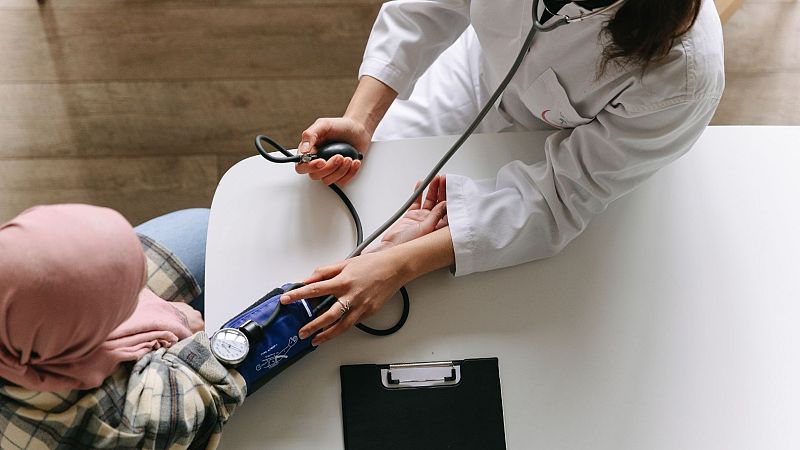
Liver cancer is on the rise, but experts say it doesn’t have to be this way.
A new analysis published by an expert panel on liver cancer has shown that three out of five liver cancer cases worldwide are linked to preventable risk factors.
These include viral hepatitis, alcohol consumption, and an increasingly common but often overlooked threat: obesity-related liver disease.
Without urgent intervention, the number of liver cancer cases is expected to nearly double from 870,000 in 2022 to 1.52 million by 2050, with annual deaths rising from 760,000 to 1.37 million.
But experts argue that millions of lives can be saved with targeted prevention and policy reforms.
Liver cancer "is one of the most challenging cancers to treat, with five-year survival rates ranging from approximately 5 per cent to 30 per cent,” said Jian Zhou, a professor at Fudan University in China and chair of the Lancet commission.
“We risk seeing close to a doubling of cases and deaths from liver cancer over the next quarter of a century without urgent action to reverse this trend,” Zhou said in a statement.
A shifting landscape of risk
Traditionally associated with hepatitis infections and heavy alcohol use, liver cancer is now being increasingly driven by metabolic dysfunction-associated steatotic liver disease (MASLD), once commonly known as non-alcoholic fatty liver disease.
MASLD is one of the most common liver conditions in Europe, affecting up to 25 per cent of the adult population, Beatrice Credi of the European Liver Patients' Association (ELPA) told Euronews Health.
“It is crucial to stress that while these risk factors are prevalent, they are often preventable or manageable with appropriate intervention,” she added, emphasising the importance of education as well as robust public health campaigns.
This long-term liver condition is linked to obesity and poor metabolic health. Its more severe form, known as MASH (metabolic dysfunction-associated steatohepatitis), is the fastest-growing cause of liver cancer globally.
The Lancet commission projects that liver cancers linked to MASH will increase by 35 per cent, rising from 8 per cent of cases in 2022 to 11 per cent by 2050.
Liver cancers related to alcohol are also expected to rise modestly. Meanwhile, cases caused by hepatitis B and C are predicted to decline slightly thanks to vaccination and improved treatment efforts.
Numbers are particularly concerning in high-income countries, where obesity rates are soaring.
In the United States, MASLD is expected to affect more than half of all adults by 2040, dramatically increasing liver cancer risk.
According to Dr Hashem El-Serag, a professor at Baylor College of Medicine, the profile of the disease is evolving.
“Liver cancer was once thought to occur mainly in patients with viral hepatitis or alcohol-related liver disease,” he said.
But with obesity on the rise, it is becoming an increasingly prominent risk factor, largely due to growing cases of excess liver fat.
The prevention opportunity
Despite the grim projections, the Lancet commission offers a glimmer of hope: the potential of prevention.
If new liver cancer cases are reduced by 2 per cent to 5 per cent each year, it could prevent up to 17 million new cases and save as many as 15 million lives by 2050.
Achieving that would require a multi-pronged global effort, including expanding hepatitis B vaccination and universal adult HBV screening, as well as tackling obesity and alcohol misuse through taxes, warning labels, and better food and beverage policies.
The Lancet commission also suggests integrating liver screening into routine care for people with obesity, diabetes, and heart disease and investing in public education and early detection tools.
“As three in five cases of liver cancer are linked to preventable risk factors ... there is a huge opportunity for countries to target these risk factors, prevent cases of liver cancer, and save lives,” said Stephen Chan, lead author of the study and a professor ar the Chinese University of Hong Kong.
A global call to action
In Europe, recent policy shifts have increasingly emphasised prevention and early detection.
The European Union’s Beating Cancer Plan aims to achieve 95 per cent coverage for childhood hepatitis B vaccination and screening of pregnant women by 2030.
It also encourages healthier lifestyle choices and aims to reduce exposure to known risk factors such as alcohol, tobacco, obesity, and diabetes.
A policy recommendation issued by the European Commission in January called for expanded uptake of preventive vaccines (specifically HPV and hepatitis B) and improved monitoring of vaccine coverage rates.
But in the fight against liver cancer, the EU must also confront a less visible but equally powerful force: the commercial determinants of health, said ELPA’s Beatrice Credi.
“Industries that profit from the sale of alcohol, unhealthy foods, and tobacco play a significant role in driving some of the liver cancer risk factors. Our policymakers must prioritise public health,” she told Euronews Health.
She noted, however, that policies aimed at regulating these commercial influences remain weak or inconsistently enforced across the EU, with the only exception of taxes on sugar-sweetened beverages.
Prevention alone is not enough.
As more people are now living with liver cancer than ever before, the Lancet commission stressed the urgent need for improved care, earlier diagnosis, and better support for patients—especially in regions such as Africa and Asia, where the disease burden is highest and health care resources are limited.
But Valérie Paradis, a professor at Beaujon Hospital in France, suggested effective prevention could also help ease that burden.
“Compared with other cancers, liver cancer is very hard to treat but has more distinct risk factors, which help define specific prevention strategies,” Paradis said.







